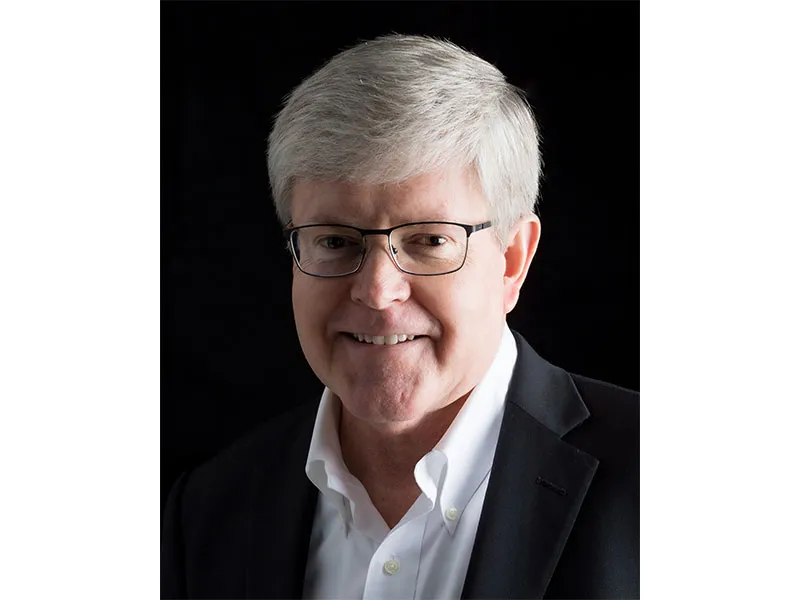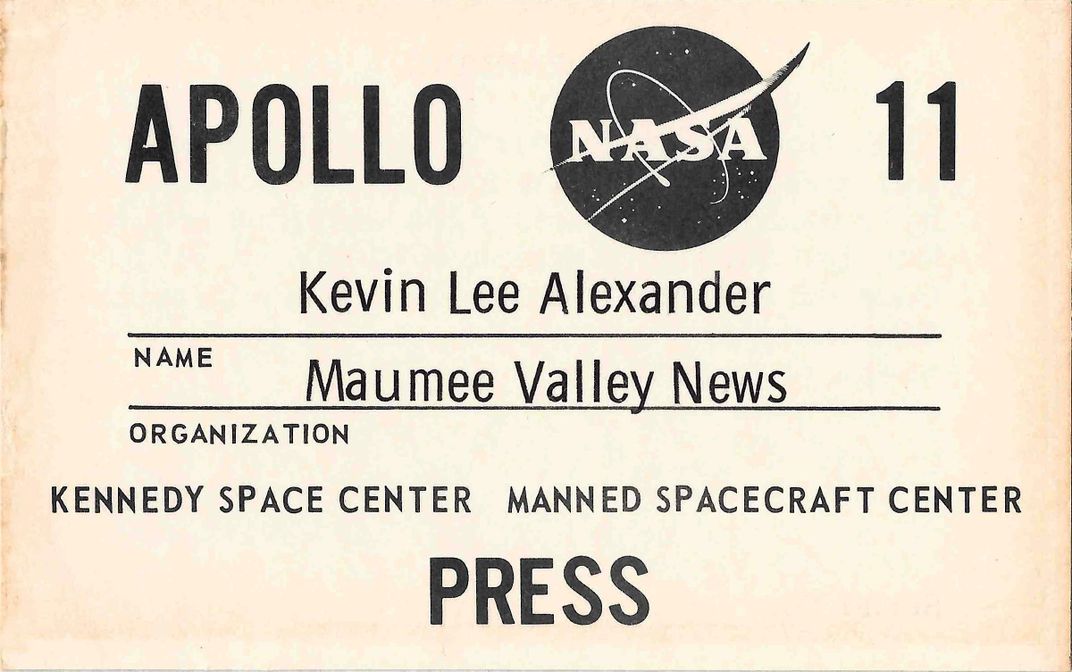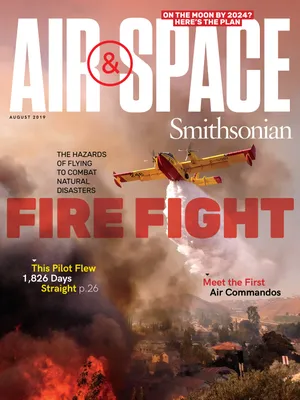This High Schooler May Have Been the Youngest Reporter to Cover Apollo 11
The week of my 18th birthday, I drove 1,100 miles to Kennedy Space Center to watch a Saturn V rocket launch men to the moon.
:focal(990x690:991x691)/https://tf-cmsv2-smithsonianmag-media.s3.amazonaws.com/filer/da/db/dadbcbd4-cbb8-4b6d-99ae-d96d2843d4d6/17c_aug2019_fig2authorpreparesforlaunch_live.jpg)

Like other youngsters of the 1960s, I hung posters of the Mercury space capsule on my bedroom wall and Revell models of it overhead. In the fourth grade, I listened with my classmates to the radio broadcast over the school PA of Alan Shepard’s pioneering spaceflight. At 15, I bagged groceries to earn money for my first camera, a twin-lens reflex. In no time I was shooting photos for the school newspaper and yearbook. The editor of our weekly local paper, the Maumee Valley News, invited me to submit photos for publication. I began shooting car wrecks, fires, and human-interest stuff.
As I neared my high school graduation in 1969, it became clear that the United States was going to attempt a moon landing that July. So I concocted a great adventure: My friend and I would drive more than 2,000 miles round trip from our small northern Ohio town to Kennedy Space Center to witness the launch! I reasoned we could camp on a beach and maybe get a good picture with my new 35mm Pentax and a long lens. My editor suggested I ask NASA for press credentials. “Can I do that?” I asked. “Yes, you can,” she said, handing me Valley News letterhead on which to write my request.
Two weeks later, I received a press kit with credentials for both my friend and me. I borrowed a 500mm lens and we hit the road. Heading south on Interstate 75 from Toledo, we passed Wapakoneta, Neil Armstrong’s hometown. We arrived at the Cape on July 15, one day before the launch. We stayed with my cousin, whose husband was stationed at nearby Patrick Air Force Base.
The instructions in my press kit were specific: Arrive at Kennedy Space Center (KSC) Press Center by 3:00 a.m. to be bused to the launch viewing area. Shirts and ties are recommended.
(Shirts and ties? Really? Well, it was a small price to pay for a front-row seat to history.)
To say that we didn’t sleep well that night is an understatement. I could only imagine the excitement the crew must be experiencing knowing they were going to the moon in just a few hours. By 1:00 a.m., we couldn’t stand it any longer and got up for the drive to the KSC Press Center.
The Press Center was bustling with reporters, photographers, and others of every nationality. I don’t know if I was the youngest credentialed journalist at the launch, but there certainly couldn’t have been many younger—the launch date was one week after my 18th birthday.

It was pitch black outside as our bus approached the launch site. In the distance, we could see the Saturn V rocket poised on the launch pad—stark white in the beams of arc lights—venting gases, fuming, as if eager to go.
The bus stopped at the gate to the press area, and a guard stepped in. With a cursory glance, he waved us through. Coming to a final stop near the press viewing area, we were greeted by KSC press officials. I collected my gear, departed the bus, and headed to the photographer’s area—the bank of the basin that served as the turn-around for the barges transporting rocket stages for assembly. The imposing Vehicle Assembly Building was to our left. The massive rocket assembly stood directly ahead across three miles of swamp—distance enough, KSC officials assured us, to keep us safe in the event of some catastrophe during launch.
Surrounding me were photographers from Time, Life, and other publications with their enormous long lenses all lined up like cannon dwarfing my Pentax. Adjacent to the press stand were rows of windowed trailers with CBS, ABC, and NBC logos on their sides. Behind the windows we could see the silhouettes of the men covering the launch live: Walter Cronkite, Wally Schirra, Frank Reynolds, Jules Bergman, and others. A roped-off VIP area reserved seats for Vice President Spiro T. Agnew, former President Lyndon Johnson, and various entertainers, astronauts, and their guests who would witness the historic lift-off.
Around 6:30 a.m., spectators began to stir as the van carrying astronauts Armstrong, Buzz Aldrin, and Michael Collins made its way down the long road to pad 39A. Three hours remained until launch, but I felt compelled to set up my tripod and camera right then. I felt intimidated watching the Life photographers begin preparations with all their complicated telescopes and motor drives. I needed to show them that I knew what I was doing!
We began to notice the VIPs were being seated, and we saw the light blink on in the network studio trailers. At each critical step, a KSC spokesman would announce the next milestone as the countdown continued.

By 9:00 a.m., the heat and humidity were building along with the anticipation of the crowd. Thirty minutes later, I began frantically rechecking my equipment as the countdown commenced. Time seemed to slow.
I’ve never experienced anything like the ignition and slow rise from the Earth of that Saturn V rocket. At first, you see the flames bursting from its base, but you hear and feel nothing. Then, like thunder catching up with a distant bolt of lightning, the roar slams into your body. The staccato pounding of shock waves hits you like the finale of a fireworks display going off in your face. I remember it was hard to keep snapping pictures and not simply stare in awe.
As the Saturn V continued to arc over the Atlantic, I switched lenses and kept shooting until the spacecraft was a pinpoint.
As cameras stopped, there were congratulatory exchanges among the press—and then a kind of solemnity descended over us as the significance of the moment sank in.
Four days later, I photographed the ghost-like images from my television of Neil Armstrong climbing down the Lunar Module ladder to step onto the moon.
A few months after that, I photographed him at his homecoming in Wapakoneta. This time, I climbed a ladder, to reach a fire escape from which to get a good shot of the hometown hero.
Half a century later, I still reflect on my good fortune to have witnessed the launch that day. I know I’ll never forget my Apollo adventure. When I look at the full moon on a dark night, in my mind’s eye I can see the six Apollo outposts from which humanity first explored another world.
